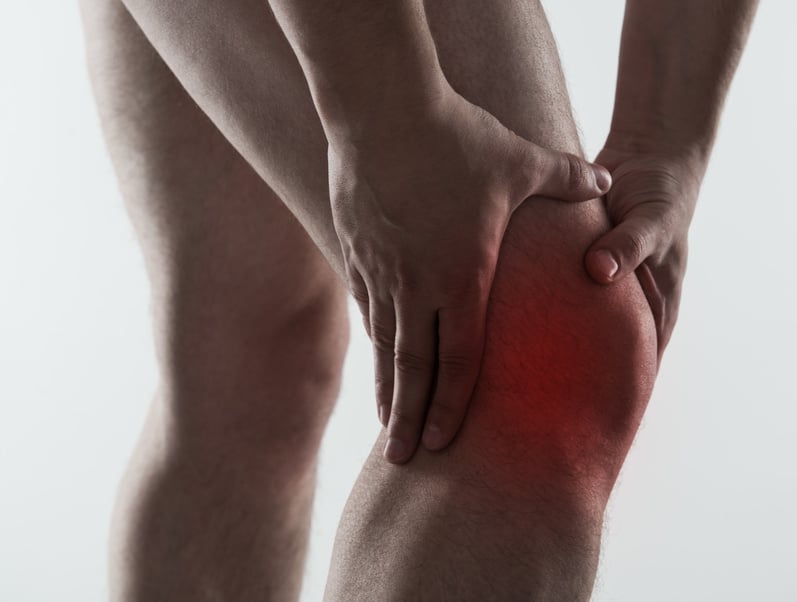Multiple sclerosis
Multiple sclerosis is an immune-mediated chronic inflammatory disease that affects the central nervous system. It attacks myelin or white matter of the brain and the spinal cord, which produces sclerotic plates that impede the normal functioning of the nerve fibres. Myelin is a fatty tissue that surrounds and protects the nerve fibres. It allows the fast transmission of nerve signals.
Oxygen radicals participate in the demyelination by destroying the myelin sheath that covers the nerve fibres.
It is important to benefit in this context the antioxidant properties of the patient through techniques such as Whole-body Cryotherapy. The disease may develop in episodes, by remission of symptoms, or by a chronic progress. Multiple sclerosis is nowadays only treatable in its symptoms, not its causes. Many patients say that cold has positive effects and that they perceive an improvement in their state of health. From this basis, and taking into account the positive effect of cold stimuli on spastic muscles, some cold therapy centers have been treating multiple sclerosis by using Whole-body Cryotherapy for several years. Today, there are clinical observations that underline the beneficial effect of cold. Here are some of the results:
- The overall condition after the exposure to cold throughout the body is described as a pleasant sensation.
- The general clinical picture is relieved.
- The patients feel more productive, get less tired and are mentally active.
- Spasticity is reduced and gymnastic exercises can be performed more accurately.
- Motility is enhanced, as well as movement and mobility. Balance problems are reduced.
- Pain is relieved significantly, or disappears. This mainly concerns the secondary pain caused especially by postural and spine disorders, muscle contractures and over loaded joints.
- Patients describe their feeling after cold treatment as a significant improvement of their quality of life.
These results of the treatment might be caused by the different effects of Whole- body Cryotherapy described: influence on the central level of activity, regulation of muscle activity, inhibition of inflammation and relief of pain.
Experience has given good proof that Whole-body Cryotherapy should be used 3 or 4 times per year during two or three weeks, two sessions per day, especially if combined with gymnastic exercises addressed to the different symptoms individually. This sequence is recommended after having verified that the improvement of the state of health is directly related to the length of treatment, in other words, two to three weeks. It is necessary to not stop other treatments planned before, and if any changes took place, they would have to be discussed with the doctor responsible for the case.
It is of great importance to determine the individual dose needed and the Whole- body Cryotherapy tolerance, taking into account the responsiveness to extreme stimuli. This requires open cooperation of the stakeholders. It is important to be sure that the patient does not carry very strong physical activities when their state improves, as the great reduction in symptoms during the treatment might lead them to exercise too much.
Balance and coordination of movements
Physical balance and coordination of movements are closely related from a nervous point of view.
The organ of balance located in the inner ear (vestibular organ) can only determine the position of the body in space. More information is needed in order to perceive the position of the body and its individual parts. That information is processed by the central nervous system along with the information coming from the vestibular apparatus. This extra information comes from the eye organ and the proprioceptive sensitivity. It is very accurate about position, movement of body parts and the relation with the environment.
The sensors that respond to stimuli are located in muscles and tendons, joint structures and skin. Proprioception gives us nervous information about position, body and extremity movement and the amount of force that should be applied to muscles in order to manage position. A right flow of information of all the parts of proprioception is an essential prerequisite for the exact innervation of the muscle groups involved in the coordination of movements.
These are some of the different types of proprioception alteration:
- Joint movement limitation due to inflammation, pain and degenerative changes.
- Joint damage.
- Improper loading of joint structures or even the skeletal system.
- Improper loading of muscles and muscle groups, muscle weakness and tightening of the muscles, muscle shortening and muscular imbalance.
- Muscle innervation disorders and changes in muscle tension state.
- Immobilization of body parts or all the body.
One of the main advantages of cold lies on its therapeutic use when treating proprioception disorders that affect coordination. It inhibits the proprioceptive afferent pathways responsible for the transmission of information to the spinal cord and the thalamus. Cold also affects secondarily other altered systems and modulates them. This happens thanks to the inhibition of inflammation, the elimination of pain, the reduction of edema and the regulation of muscle innervation. These pathways help avoid chronic damage and secondary damages. Whole-body therapy does not solve balance and coordination disorders, but it improves the conditions to go through active exercise programs.




